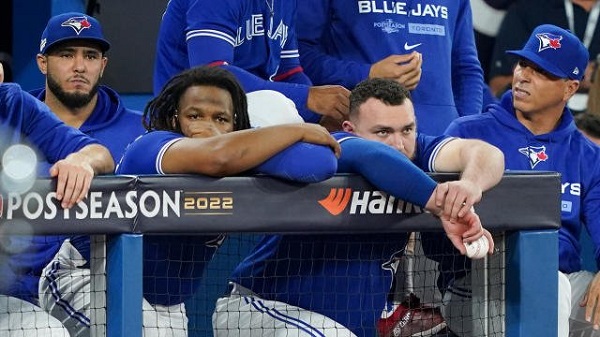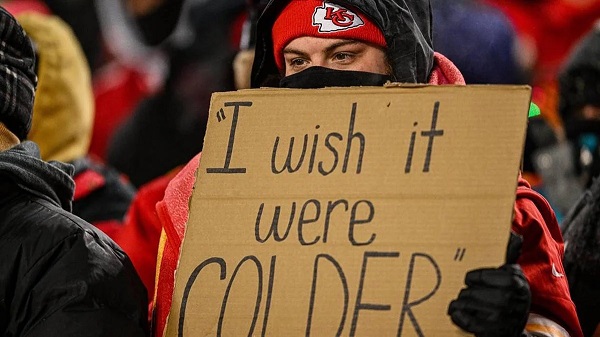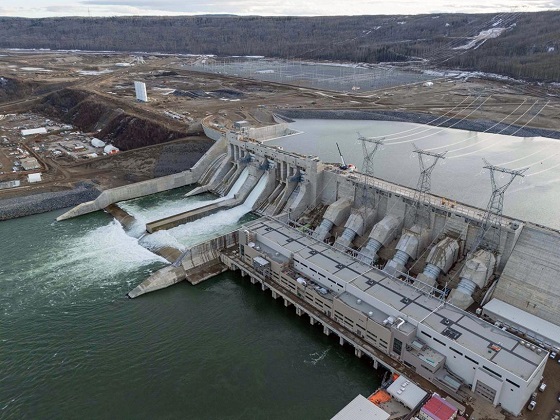Bruce Dowbiggin
The High Cost Of Baseball Parity: Who Needs It?

This week we are heading over to Roger Dean Stadium in Jupiter, Florida, to see how MLB is getting along with its new ABS system for calling balls and strikes. According to our source at MLB the challenge system is being readily accepted by fans. If it goes as well as the time clock and catchers callig pitches elctronically it will be welcome.
In planning for seeing a game we had a choice between seeing the homestanding Miami Marlins or St. Louis Cardinals, who share the stadium in the spring. Our 16th-row seats for the Marlins/ Washington Nationals game are US $16 each. Had we chosen a Cardinals game versus Washington the next day that same seat would cost US $79.
That, ladies and gentlemen, is called dynamic pricing. The unloved Marlins can’t draw flies. The Cardinals— even a bad Cardinals team— are still a big draw. The gap between the two realities is growing fast. Leading many to say, What about parity?
As we wrote in December of last year, “MLB has seen parity and proclaimed, “We don’t give a damn!” Okay, they didn’t say that. In fact they insist the opposite is true. They’re all about competition and smaller markets getting a shot at a title. But as the 2024 offseason spending shows, believe none of what you hear and half of what you see in MLB.
Here’s the skinny: Juan Soto‘s contract with the NY Mets — 15 years and guaranteeing $765 million, not a penny of which is deferred. Max Fried signed an eight-year, $218 million deal with the New York Yankees. Later, Nathan Eovaldi secured a three-year, $75 million contract to return to the Texas Rangers. Blake Snell (five years, $182 million with the Los Angeles Dodgers) and Matthew Boyd (two years, $29 million with the Chicago Cubs) added to the splurge.
There’s one more thing that stands out. MLB has no trouble with the financial big boys in New York, Los Angles, Texas, Toronto, Atlanta and Chicago shelling out money no small market dare pay. In the MLB cheap seats, Tampa, Pittsburgh and Miami can’t send out quality players fast enough. But MLB is cool with that, too, as those paupers get a healthy slice of TV money.
So yes, they’re all about talking parity with their luxury-tax system. But to keep the TV, digital, betting and marketing lucre flowing they have to have large media markets swinging the heaviest bats come postseason. The question is, do MLB fans care anymore the way they used to about parity? It says here they don’t. More want to seed best-on-best more often. Which is brutal but refreshing.

Their sister leagues, married to draconian salary cap systems, are still pushing parity, even as they expand beyond recognition. In our 2004 our book Money Players, legendary Boston Bruins coach/ GM Harry Sinden noted, “The problem with teams in the league, is that there were (then) 20 teams who all think they are going to win the Stanley Cup, and they all are going to share it. But only one team is going to win it. The rest are chasing a rainbow.”
And that was before the expansion Vegas Golden Knights won a Cup within five years while the third-year Seattle Kraken made a run in those same 2023 playoffs. There are currently 32 teams in the league, each chasing Sinden’s rainbow of a Stanley Cup. That means 31 cranky fan bases every year demanding changes. And 31 management teams trying to avoid getting fired.
Maybe we’ve reached peak franchise level? Uh, no. Not so long as salary-capped leagues can use the dream of parity to sell more franchises. As we wrote in October of 2023, “If you believe the innuendo coming from commissioner Gary Bettman there is a steady appetite for getting a piece of the NHL operation. “The best answer I can give you is that we have continuous expressions of interest from places like Houston, Atlanta, Quebec City, Salt Lake City, but expansion isn’t on the agenda.” In the next breath Bettman was predicting that any new teams will cost “A lot, a lot.”
Deputy commissioner Bill Daly echoed Bettman’s caution about a sudden expansion but added, ”Having said that, particularly with the success of the Vegas and Seattle expansions, there are more people who want to own professional hockey teams.” Translation: If the NHL can get a billion for a new team, the heck with competitive excellence, the clock might start ticking sooner. After all, small-market Ottawa just went for $950.”
It’s not just the expansion-obsessed NHL talking more teams. MLB is looking to add franchises. Abandoned Montreal is once more getting palpitations over rumours that the league wants to return to the city that lost its Expos in 2005. Recent reports indicate that while MLB might prefer Salt Lake City and Nashville it also feels it must right the wrong left when the Expos moved to Washington DC 19 years ago.
The city needs a new ballpark to replace disastrous Olympic Stadium. They’ll also need more than Expos draftee Tom Brady to fund the franchise fee and operating costs. And Quebec corporate support— always transitory in the Expos years— will need to be strong. But two more MLB franchises within five years is a lock.
While the NBA is mum on going past 30 teams it has not shut the door on expansion after seeing the NHL cashing in. Neither has the cash-generating monster known as the NFL where teams currently sell for over six billion US. The NFL is eyeing Europe for its next moves.
The question that has to be asked in this is, WTF, quality of competition? The more teams in a league the lower the chances of even getting to a semifinal series let alone a championship. Fans in cities starved for a championship— the NFL’s Detroit Lions or Cleveland Browns are entering their seventh decade without a title or the Toronto Maple Leafs title-less since 1967— know how corrosive it can be.
Getting to 34, 36, maybe 40 teams makes for a short-term score for owners, but it could leave leagues with an entire strata of loser teams that no one—least of all networks, carriers and advertisers—wants to see. Generations of fans will be like Canuck supporters, going their entire lives without a championship.

In addition, as we’ve argued in our 2018 book Cap In Hand: How Salary Caps Are Killing Pro Sports and How The Free Market Can Save Them, watering down the product with a lot of teams no one wants to watch nationally or globally seems counter productive. The move away from quality toward quantity serves only the gambling industry. But since when has Gary Bettman Truly cared about quality of the product? So long as he gets to say, “We have a trade to announce” at the Draft, he’s a happy guy.”
When we published Cap In Hand we proposed a system like soccer with ranked divisions using promotion and relegation to ensure competition, not parity. Most of the interviewers we spoke to were skeptical of the idea. But as MLB steams closer to economic Darwinism our proposal is looking more credible every day. Play at the level you can afford. Or just watch Ted Lasso. Your choice. “
Bruce Dowbiggin @dowbboy is the editor of Not The Public Broadcaster A two-time winner of the Gemini Award as Canada’s top television sports broadcaster, he’s a regular contributor to Sirius XM Canada Talks Ch. 167. His new book Deal With It: The Trades That Stunned The NHL And Changed hockey is now available on Amazon. Inexact Science: The Six Most Compelling Draft Years In NHL History, his previous book with his son Evan, was voted the seventh-best professional hockey book of all time by bookauthority.org . His 2004 book Money Players was voted sixth best on the same list, and is available via brucedowbigginbooks.ca.
Bruce Dowbiggin
NFL Ice Bowls Turn Down The Thermostat on Climate Change Hysteria

Oh, the weather outside was frightful. But the football was so delightful. Week 15 of the NFL season was a cryogenic success of snow and sub-zero temperatures. Here were the temperatures at game time this weekend.
Chicago: -11 degrees C.
Cincinnati: -12 degrees F.
Kansas City: -8 degrees C.
New England: -2 C (with an 87 percent chance of snow).
Philadelphia: -2 degrees C.
New York -1 degree C.
Pittsburgh: -7 degrees C.
For fans of NFL football none of this seemed out of character with late-season football. There are legendary games played in arctic conditions. The windchill for the 1967 Dallas/ Green Bay NFC championship was -25 C.
Chargers at Bengals: Jan. 10, 1982 (-24 C, feels like -39 C).
Seahawks at Vikings in NFC wild-card matchup Jan 10, 2016. -21 C with wind chill -25C
Dolphins at Chiefs: Jan. 13, 2024 (-4 degrees, feels like -27 degrees)
As recently as last week’s Bills win over the Bengals games are often played with drifts of snow on the field and the mercury bottoming out. While Canada’s Grey Cup game is played at the end of November it’s still had some brutal weather history of its own.
The point of this meteorology meandering is that, according to our good King Charles III and many other doomsday cultists the concept of snow and cold was supposed to be a figment of the past by now. For almost half a century Michael Mann and the climate prophets of IPCC have been predicting the end of snow and the onset of warmist floods and burning forests. They gambled trillions of the public’s dollars on the certainty that the public would buy computer modelling and data-distortion predicting doom.
For decades it has worked. The careers of people like critic Mark Steyn have been ruined, heretics declared and fortunes dissipated by the trust-fund fanatics who bankroll wackadoodles like Stephen Guilbeault, the convicted felon who Trudeau made Minister of the Environment. No matter how absurd or devious the source, it was a gospel that the fiery inferno was coming next Tuesday. But the weather has remained stubbornly resistant to Elizabeth May’s catechism of climate.

Yet, some dedicated climate advocates and their followers are finally changing their tune in the face of their own observation of lying liars like Al Gore and Greta Thunberg. The share of Americans who say climate scientists understand very well whether climate change is occurring decreased from 37 percent in 2021 to 32 percent this year. A similar October study from the University of Chicago’s Energy Policy Institute found that “belief in human-driven climate change declined overall” since 2017.
Reports the uber-liberal L.A. Times: “The unraveling of climate catastrophism got another jolt recently with the formal retraction of a high-profile 2024 study published in the journal Nature. That study — which had predicted a calamitous 62% decline in global economic output by 2100 if carbon emissions were not sufficiently reduced — was widely cited by transnational bodies and progressive political activists alike as justification for the pursuit of aggressive decarbonization.
But the authors withdrew the paper after peer reviewers discovered that flawed data had skewed the result. Without that data, the projected decline in output collapses to around 23%. Oops.”
Even stalwart media apologists for climate hysteria like the Times are starting to have doubts. Under the headline “The left’s climate panic is finally calming down” they describes “Erstwhile ardent climate-change evangelist Bill Gates published a remarkable blog post addressing climate leaders at the then-upcoming COP30 summit. Gates unloaded a blistering critique of what he called ‘the doomsday view of climate change,’ which he said is simply “wrong.”
Trump-besotted American Democrats seeking to soften their Woke image before the 2026 midterms are likewise carving out more moderate positions on climate “that could well deprive Republicans of a winning political issue with which to batter out-of-touch, climate-change-besotted Democrats. But for the sake of good governance, sound public policy and the prosperity of the median American citizen, it would be the best thing to happen in a decade.”
Sadly Canada under Mark Carney remains a staunch climate warrior. The removal of Guilbeault as federal Environmental Minister may have seemed a step toward sanity, but there is no hint that the billions of dollars from hidden money spigots will be closed down any time soon. The B.C. government’s acquiescence to the climate propaganda of Indigenous bands shows no sign of abating. Indeed, it is just ramping up in the land claims that threaten to make home ownership a thing of the past.

PM Mark Carney is a dedicated temperature fabulist going back to his days as governor of the Bank of England. His first fights in Canada were over taxing carbon and hobbling her energy industry. As we wrote in this November 2024 column, the certainty in which the Canadian Left revels is actually dividing, not uniting citizens.
So perhaps if enough citizens spend an afternoon shivering in the stands of a wintertime football game we might achieve a small piece of sanity and learn that that , while climate is always changing, it’s not worth the price we’ve paid this century.
Bruce Dowbiggin @dowbboy is the editor of Not The Public Broadcaster A two-time winner of the Gemini Award as Canada’s top television sports broadcaster, his 2025 book Deal With It: The Trades That Stunned The NHL And Changed hockey is now available on Amazon. Inexact Science: The Six Most Compelling Draft Years In NHL History, his previous book with his son Evan, was voted the seventh-best professional hockey book of all time by bookauthority.org . His new poetry collection In Other Words is available via brucedowbigginbooks.ca and on Kindle books.
Bruce Dowbiggin
Wayne Gretzky’s Terrible, Awful Week.. And Soccer/ Football.

Inquiring minds want to know: Why did FIFA (Federation of International Fraud Artists) award American president Donald Trump a new “Peace Prize” at the Washington D.C. draw for the June/ July tournament? The usual suspects are paralyzed with rage. Everyone else is laughing at the kabuki theatre stunt.
The short answer is that if you were FIFA and you were receiving a reported billion or more dollars from the U.S. and the Canadian/ Mexican cities hosting the 48-team tournament you’d give the host more than a bottle of wine and flowers as a thank-you. Thus the ugly statue and the Boy Scout medal. The obsequious awarding of the prize and match medal were proportionate to the greed of FIFA in extorting the cash.
(America’s fainting goat media immediately complained about unearned awards for little virtue, forgetting as usual that the Nobel folks gave Barack Obama a Peace Prize after nine months in the White House for simply being a black man.)
Trump getting a peace award from FIFA, the most corrupt sports body in the sports world, is mint, however. You can’t write this stuff. (They should give it to him on a speed boat heading across the Caribbean.) The Donald then playfully suggested that Americans leave the name football to the soccer folks because, you know… feet and a ball. More outrage from NFL fans.
So what was the gift for the two Canadian cities hosting games who have also coughed up plenty? Toronto says its estimated budget is $380 million for six games/ B.C. tax payers are obliged to cough up an estimated $580 million for Vancouver’s five games). For cities with, how shall we say, bigger fish to fry.
Sadly all they got was a little farce in which a delighted PM Mark Carney was allowed to Canada as the first ball to start the picking, evidently unaware that all the balls he had to select from also said Canada. Carney’s joy was tempered when he saw Mexican president Claudia Sheinbaum draw a ball that said “Mexico” while Trump— in on the fix— got one entitled “United States”.

In a final attempt to curry favour with the fleeced nations FIFA boss Gianni Infantino gathered the world leaders for a painful onstage selfie, marking the first time Trump and Sheinbaum had ever met in the (orangey) flesh. Call it National Lampoon’s Soccer Vacation.
Having exhausted itself with the peace prize falderol FIFA evidently forgot to put any more thought into the rest of the 55-minute run-up to the draw. While soccer/ footie fans around the world ground their teeth in impatience the organizers presented a combination Eurovision/ People’s choice Awards ordeal of failed cues, untranslated interviews (the Spanish translator showed up about 30 minutes late) and pregnant pauses.
Host Heidi Klum’s stunning gold dress nearly made up for her wooden repartee with comedian Kevin Hart (“not sure why I’m here”) and co-host Rio Ferdinand, former star English defender who, alas, never won the WC. But that was all an appetizer for the real low point, the introduction of global brand stars to pick the draw. NFL legend Tom Brady, NBA legend Shaquille O’Neal and NHL… er, player Wayne Gretzky.
Their task, hectored by the hosts, was to draw a ball, unscrew the thing, withdraw a nation’s name and so on. While there may have been some tension in the audience there was no appreciation of that on the screen as more clunking dialogue and curious pronunciations (Ferdinand kept referring to Group “Haitch”) landed dead on the floor.
The nadir of the ceremony—indeed of his career— was Gretzky’s contribution. Brady and O’Neal had managed to survive their task of unscrewing the ball and pronouncing a name, but Gretzky was brought low by the stage business of the balls and the nations he was forced to announce.

The clearly flustered Gretz (he insisted he’d practiced all morning) wrestled manfully with the balls. Finally the producers went with a long shot of him fumbling in the dark. Then he topped that. Gretzy apparently thinks there are countries called “North Mack-a-donia” and “Cur-ack-ow.” Other stabs at geography were almost as tortured.
Bitter Canadians could put up with him sucking up to Trump (he was mentioned as being in the crowd at the DC Xmas tree lighting) but failing geography is unforgivable. The week that started with Gretzky in a photo golfing at POTUS’s Jupiter, Florida, golf course was ending with him pummelled for his abuse of nations with different-sounding names. The Wayne Gretzky Center For Kids Who Want To Talk Good.
The moral: Never send a centre to do a netminder’s job. Makes you understand why Bobby Orr has laid low since his Trump endorsement came out.
With that bracing date with immortality disposed of the draw proceeded. We had been pounded for an hour about how great the tournament was, and finally footy fans got what they wanted. As a host Canada got a bye into the field. Their reward is playing the tenacious Swiss and, gulp, probably Italy, which is forced to qualify after playing with their food for too long. (Insert your Stanley Tucci joke.)
If not Italy then one of Wales, Bosnia and Herzegovina or Northern Ireland. Oh, right Qatar is in there too as fodder. Been nice knowing you, Canada. The Americans somehow drew a creme puff quartet of Australia, Paraguay and Slovakia, Kosovo, Turkey or Romania. Money can’t buy you love, but it can get you a warm hug from FIFA.
In the end it’ll be one of Brazil, Argentina, Germany or France for the final in the NJ Meadowlands on July 19. Maybe they’ll have a spelling bee at halftime. Or maybe they’ll bring back Trump for the final game to give him another peace prize. Just don’t ask Gretzky to announce Lothar Matthaus, Bruno Guimaräes or Gabriel Magalhäes.
Bruce Dowbiggin @dowbboy is the editor of Not The Public Broadcaster A two-time winner of the Gemini Award as Canada’s top television sports broadcaster, his new book Deal With It: The Trades That Stunned The NHL And Changed hockey is now available on Amazon. Inexact Science: The Six Most Compelling Draft Years In NHL History, his previous book with his son Evan, was voted the seventh-best professional hockey book of all time by bookauthority.org . His 2004 book Money Players was voted sixth best on the same list, and is available via brucedowbigginbooks.ca.
-

 Digital ID2 days ago
Digital ID2 days agoCanada releases new digital ID app for personal documents despite privacy concerns
-

 Community2 days ago
Community2 days agoCharitable giving on the decline in Canada
-

 Bruce Dowbiggin2 days ago
Bruce Dowbiggin2 days agoNFL Ice Bowls Turn Down The Thermostat on Climate Change Hysteria
-

 Crime2 days ago
Crime2 days agoTrump designates fentanyl a ‘weapon of mass destruction’
-

 Energy2 days ago
Energy2 days agoCanada’s sudden rediscovery of energy ambition has been greeted with a familiar charge: hypocrisy
-

 Energy2 days ago
Energy2 days agoCan we not be hysterical about AI and energy usage?
-

 Energy2 days ago
Energy2 days agoEnergy security matters more than political rhetoric
-

 Alberta1 day ago
Alberta1 day agoCanada’s New Green Deal






